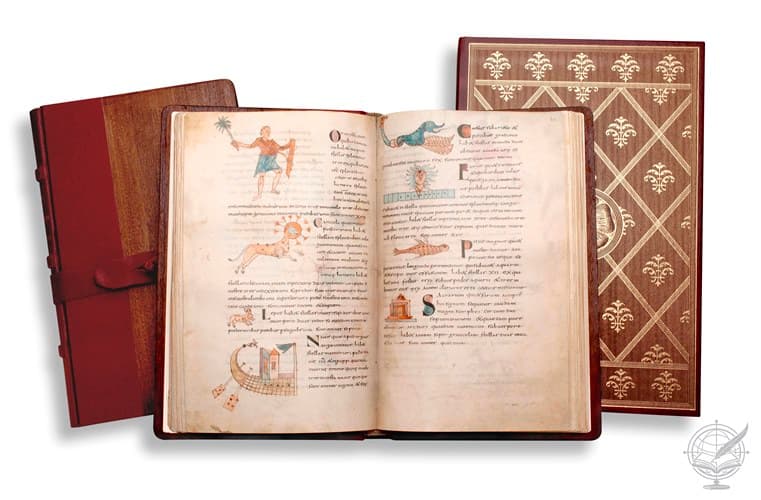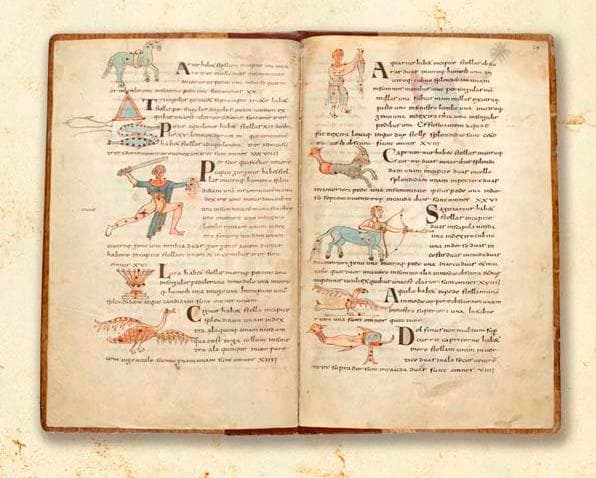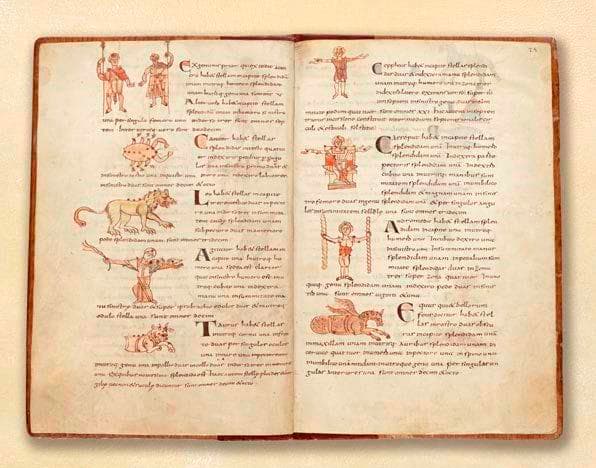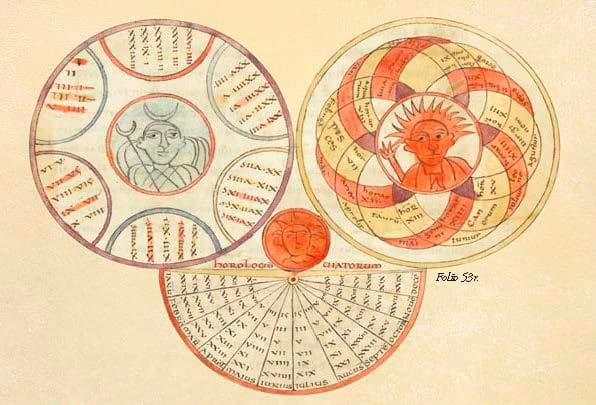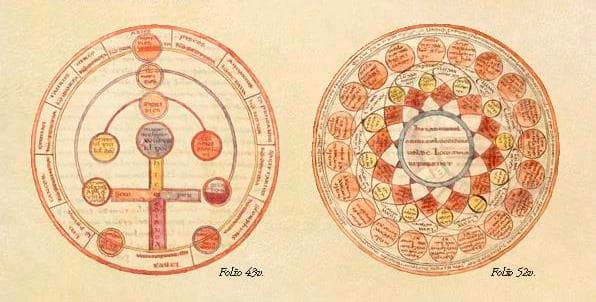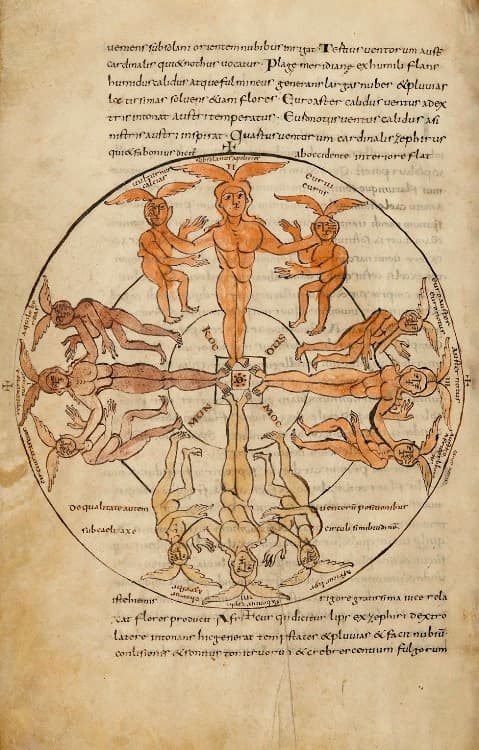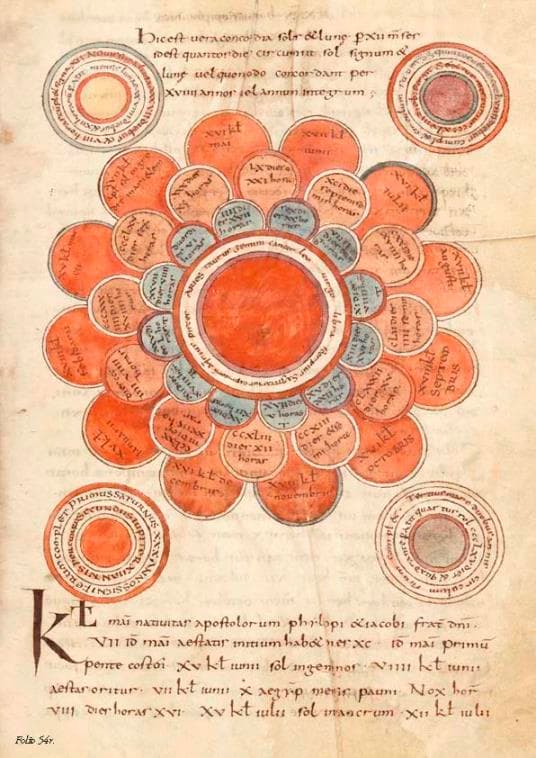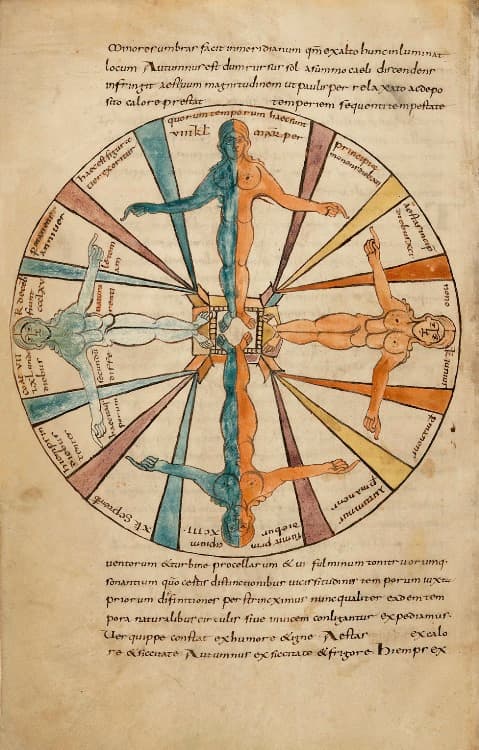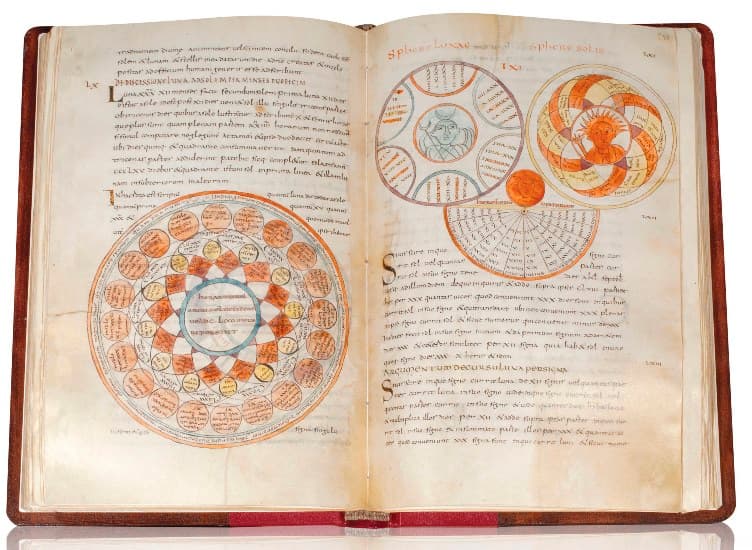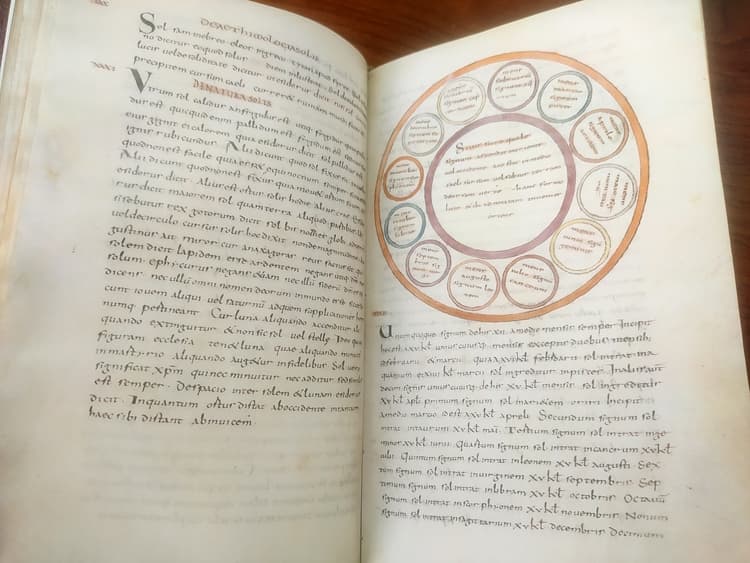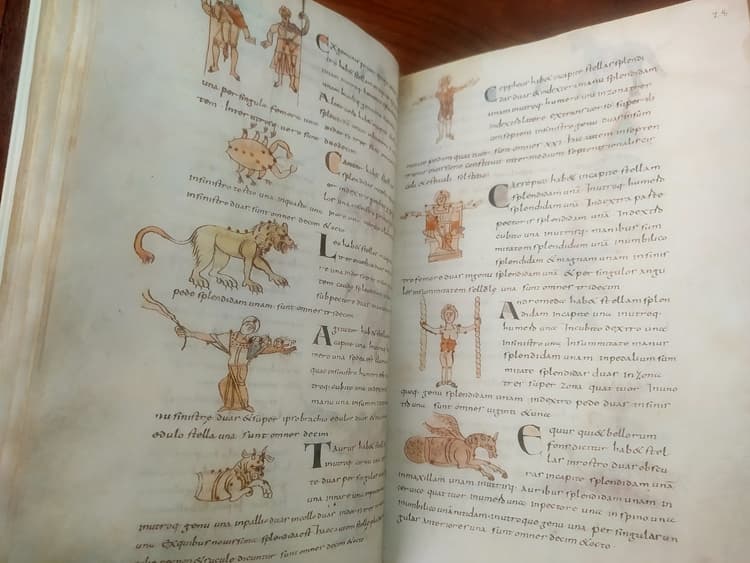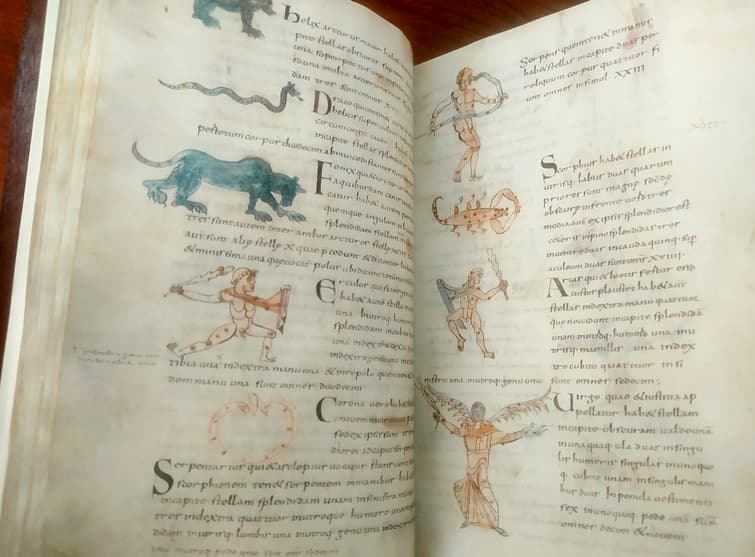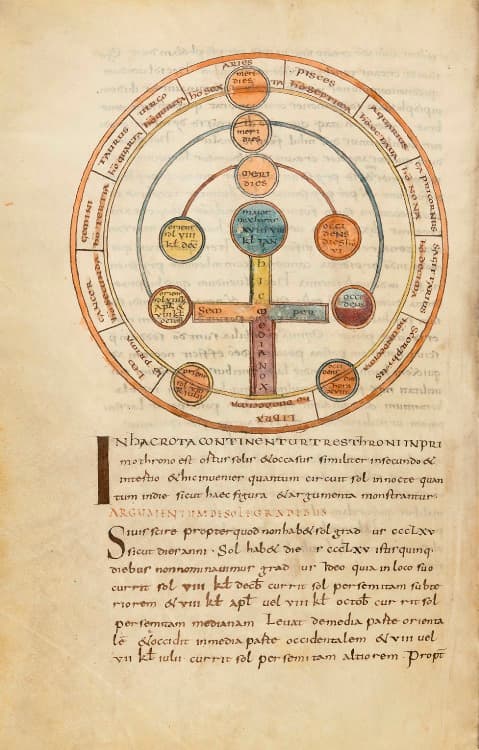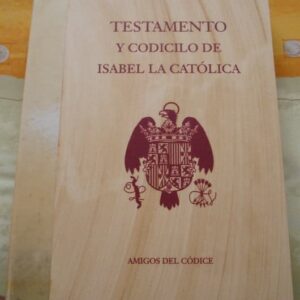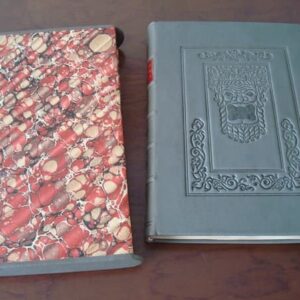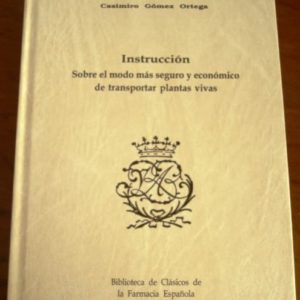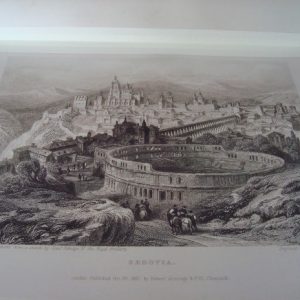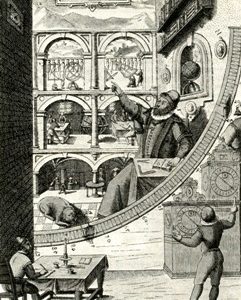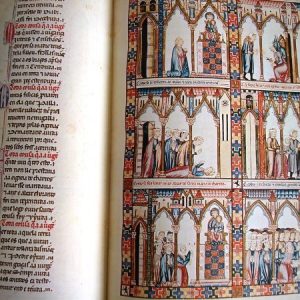Description
Facsimile edition of the 9th century manuscript preserved in Laon (France), Suzanne Martinet Municipal Library, Ms. 422. Bound in half-skin with ribs, exposed wood covers. Format 18.3 x 29 cm. 188 pages.
The facsimile of Isidorus Hispalensis is presented with a case for its conservation and with a complementary study book, prepared by specialists in the field. This one has not been published yet. As soon as it is edited we will send it to you without any additional expense on your part.
Isidore of Seville was a Catholic ecclesiastic and Spanish-Gothic polymath scholar. He was archbishop of Seville for more than three decades and canonized by the Catholic Church, which is why he is usually known as Saint Isidore of Seville.
We do not know the exact date of his birth and the place of him. It is probably the year 560 in the city of Cartagena, of which his father Severiano was duke. His family moves to Seville, another of Isidoro’s possible birthplaces. He had three brothers: Leandro, Florentina and Fulgencio, all saints. Orphaned at a very young age, his education is left in the hands of his brother Leandro, archbishop of Seville, who gives him a solid training in Christian and classical culture. Isidore takes advantage of this training to combat the Arian heresy spread in Spain among the invading Goths, and achieves his conversion, held at the third council of Toledo in 589. He replaces his brother Leander as archbishop of Seville. His activity is very strong, convening a synod of the province of Cartagena and presiding over the fourth national council of Toledo in 633, key to the religious, civil and political life of Spain. He died on April 4, 636.
Fertile was his intellectual activity, as well as his erudition. He was a living encyclopedia, since there was no topic that was not addressed by him; from his famous Etymologies, to his philosophical, theological, exegetical and historical treatises. In all of them he deals with topics such as inspiration for the purposes of Scripture, its canon, interpretation, dogmas, predestination, transubstantiation, sacraments, the soul and an immense etcetera.
The Etymologies, written in the full maturity of Saint Isidore (627-630), are a monumental encyclopedia that reflects the evolution of knowledge from pagan and Christian antiquity to the 7th century. Of the Etymologies of the saint from Seville, it is worth highlighting one of the most famous included in this manuscript: astronomy, computus.
Of this extensive and intense production, his Treatise on Nature stands out, also included in this extensive manuscript. Probably written between 612 and 615, the text gives an account of natural phenomena and their causes; It is the physical cosmology of Isidore which, in addition, is always accompanied by an allegorical mystical interpretation of each natural fact.
It is also a dismantling of the astrological superstitions of astrology so present in the Iberian Peninsula, influenced, among others, by the Priscilians and the catastrophic interpretations of natural events since the Apocalypse.
This facsimile consists of a single numbered edition of 400 copies, duly authenticated with a notarial certificate.
Copy in perfect condition, new, unused.
Free shipping for this item. Consult us any questions, indicating the article reference.




